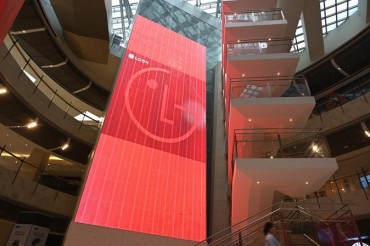
SK Telecom Co. employees are demonstrating a simulator for urban air mobility (UAM) in this photo provided by the wireless carrier on Aug .31, 2023.
SEOUL, Sept. 1 (Korea Bizwire) — SK Telecom Co. has successfully developed an integrated solution along with a simulator designed for assessing and analyzing telecommunications network quality in the context of urban air mobility (UAM), involving aircraft flying over densely populated urban areas.
South Korea’s leading mobile operator announced on Thursday the successful completion of its comprehensive solution and simulator, both aimed at measuring, forecasting, and evaluating communications quality within airspace networks catering to UAM.
These aircraft typically operate at altitudes ranging from 300 to 600 meters while maintaining speeds of 100 to 150 km/h within urban environments.
The innovative solution devised by SK Telecom leverages drones that mimic UAM aircraft conditions to gauge communications quality.
A real-time display of communications quality is coupled with the generation of illustrative maps and informative graphs.
Furthermore, the simulator, which anticipates communications quality, establishes flight trajectories and altitudes while factoring in various variables that impact effectiveness.
These factors encompass aspects like antenna height and orientation angles.
This strategic approach empowers SK Telecom to develop optimal design strategies that accommodate practical limitations, including considerations like the placement of base stations and challenges related to ground network interference.
To enhance the simulator’s capabilities, SK Telecom is charting a course to create AI-driven design models, aimed at recommending prime configurations for base stations and antennas.
Moreover, SK Telecom is actively forging collaborative alliances with diverse manufacturers to elevate communications equipment standards within airspace networks.
A recent collaborative dialogue with U.S.-based Joby Aviation, a global frontrunner in UAM airframe and operational expertise, is underway.
This collaboration explores the prospect of equipping airspace network communications gear with advanced data transmission and reception capabilities.
The envisioned outcome is the acquisition of research data that facilitates the quantification of airspace network quality.
Kevin Lee (kevinlee@koreabizwire.com)






